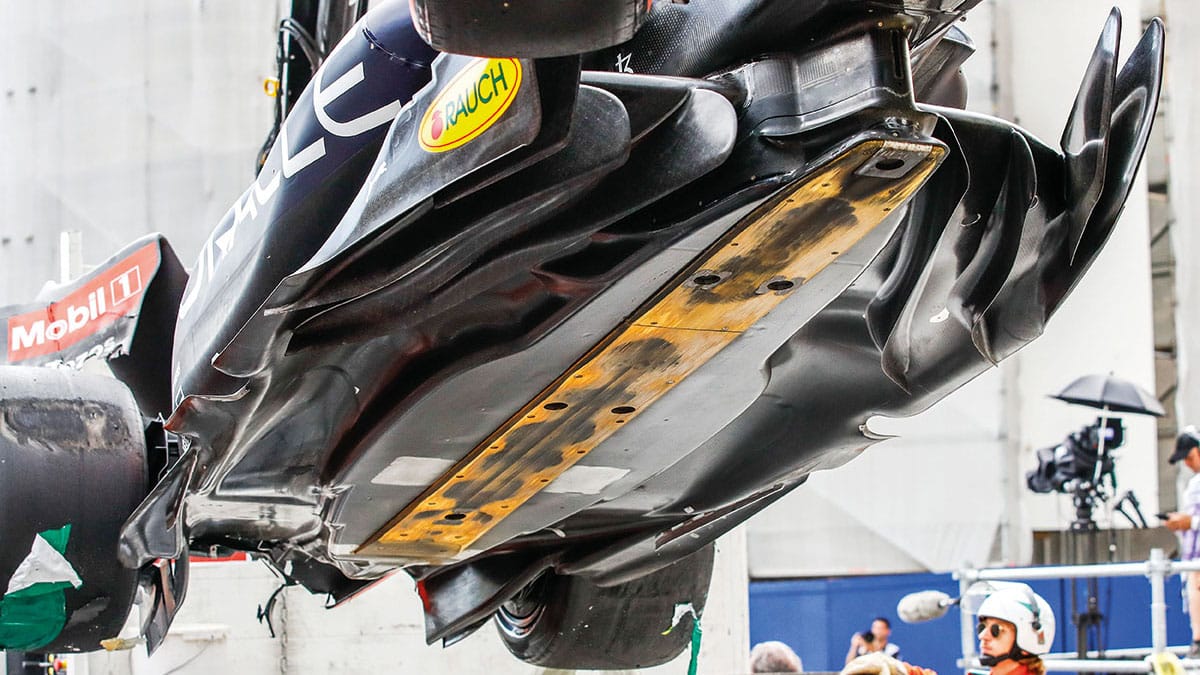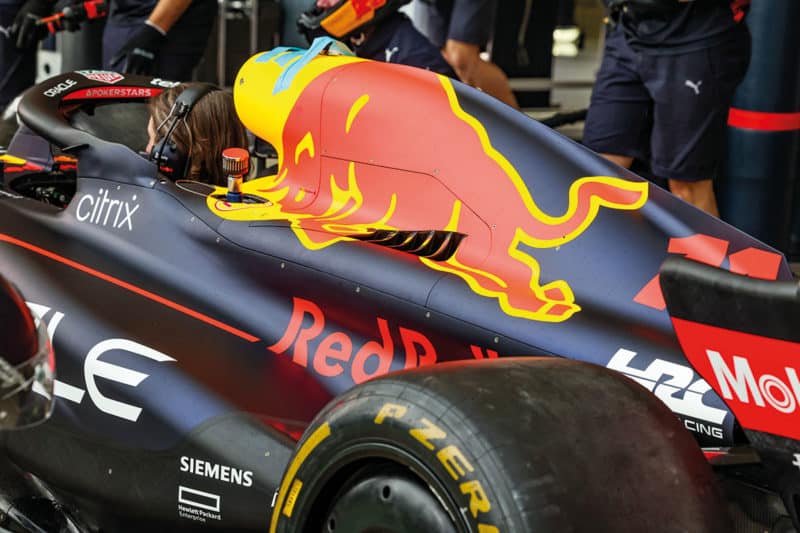Red Bull risks losing its advantage with change to F1 regulations
Sergio Pérez’s prang during qualifying at Monaco revealed that Red Bull is ahead of the game – for now, says Mark Hughes

The underside of Sergio Pérez’s RB18 revealed that its tunnel roofs seem to be higher and more domed than those of other cars – and a ‘skate’ increases the flow of air movement
DPPI
Although speculation rages about the influence of plank flexibility on the Red Bull RB18’s relatively smooth ride (see Mark Hughes’s column), there is clearly more to it than just that. Sergio Pérez’s qualifying accident at Monaco led to the car being craned off the track, making its floor fully visible.
It showed a floor with a higher and more domed tunnel roof than those of Mercedes or Ferrari, theoretically making it more tolerant of variations in ride height. It showed a lot of intricate detail in the geometry of the inlet strakes implying that they were matched to the curvature of the tunnel roof so as to keep the air pressure distribution more consistent as the ride height and attitude changes when the car is on track.
Red Bull has also taken advantage of the allowance in the regulations to have a mini-wing device on the floor ahead of the rear wheels but which does not specify that it has to be on the floor’s upper surface. Red Bull has used this allowance to fit what has been nicknamed the ‘ice skate’, inset, a device on the underfloor which channels the air more aggressively towards the tunnel exit. So the faster the airflow through the tunnel, the greater the downforce created.
The limitation to that, of course, is the phenomenon of airflow stall when the gap at the lowest part of the tunnel becomes too small for the volume of air, resulting in a downforce reduction and an increase in ride height, and hence porpoising. The Red Bull floor geometry seems to allow for a wider range of operating conditions than other cars.

The evolution of the RB18 continues: at Silverstone there was a revised engine cover and ‘cannon’ shape to improve aerodynamics
DPPI
But it seems the Red Bull’s apparent immunity from porpoising may be about more than just the geometry. The way that Red Bull – and Ferrari – has designed the mounting of the regulation underfloor plank with the skid blocks around the mounting holes has, the FIA believes, allowed it to circumvent the regulation maximum 2mm flexibility. The regulation defines the 2mm tolerance at the leading edge of the plank, but this mounting could feasibly allow that to be maintained while flexing more than that at other points along its length, particularly at the rear near where the tunnel stall point is situated. With the plank flexibility giving a more cushioned ride, the vertical accelerations will be reduced, allowing “significantly lower ride heights and hence an indirect aerodynamic gain” (the FIA’s wording).
From the French Grand Prix onwards, the Red Bull/Ferrari method of mounting the plank to the skid block will be considered in contravention of the regulations. Furthermore, “there will not be any part of the periphery for plank or skids that has a stiffness that is significantly different to that of any other such point”.
While the teams were in deep discussion about all this, Red Bull has continued to develop its RB18. At Silverstone it featured a new engine cover, with an extended ‘cannon’ shape along the section joining the engine cover to the sidepod, from behind the radiators all the way along to the cooling exit hole at the rear. Red Bull says the resultant increase in the volume of the cooling tunnel gives it a more powerful control of the cooling levels for any given race weekend. What it may also do, in creating a channel between the cannon and the downward-ramped surface of the sidepod, is accelerate the external airflow there as it makes its way to the rear with greater force, giving a more powerful effect on the airflow exiting the diffuser, increasing its speed and hence the downforce created.
“Red Bull’s porpoising immunity may be more than geometry”
Concurrent with that change has been a Ferrari-like cut-out towards the rear of the floor with a tongue-like vane within it. This is believed to be an anti-stall device, allowing the venturi tunnel still to work even as the bodywork is making contact with the ground. The metal stays previously used to restrict the floor flexing have been replaced with beefier carbon stays as the increased downforce from the floor will have introduced more flexing.
It’s clear that the ideal way in which to create good downforce without porpoising is to have a rigid floor with a flexible plank. In this, and in the intricate geometry of its floor, Red Bull has clearly been a step ahead of the competition. It’s going to be fascinating to see what impact the latest technical directive will have on the competitive order from Belgium onwards and whether the Red Bull and Ferrari will prevail regardless as the fastest cars.
